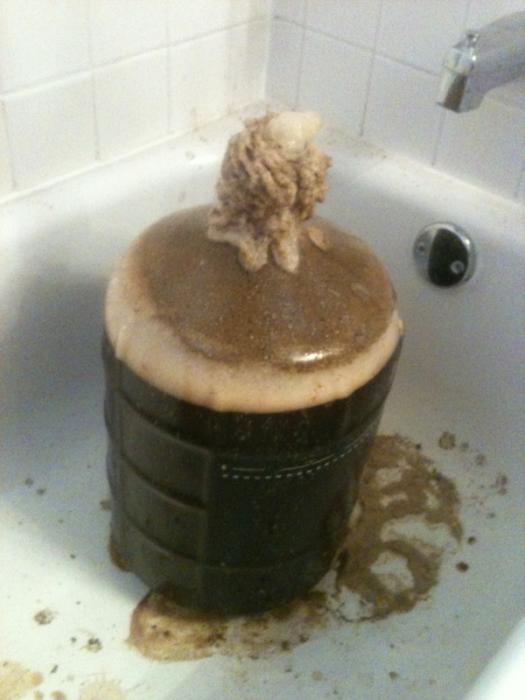Here is just a cheap solution I was thinking about possibly, I was considering buying one of those orange coolers that you used for sports for water and Gatorade getting like one of the 10 gallon ones and sitting my bucket inside of it and putting water and ice inside the cooler and therefore regulating the temperature of the fermentation itself. Does anyone know if this would work?
That would work, but I just use cheap rubbermaid containers. Ice and water for primary fermentation, and a tshirt afterwards until it's time to bottle.
You only need a few inches of ice water in the bottom, as primary fermentation not only produces heat, but also swirls the contents of the fermenter around. This moves the heat down to the level of the ice water and disperses it without having to be more than about 15% immersed. I freeze water bottles so they are re-usable.
Once primary fermentation is over, you'll be moving to pretty much ambient temperature, no matter the amount of ice you put in the water at the bottom - the cold just can't get to most of the beer. At that point I stop using ice and just put a tshirt over the carboy. This wicks water up and evaporates it off the shirt, taking the heat with it - just like how sweating works. It also means you can just forget about the beer after the first few days of primary.
If you have a temp strip on your carboy (I hope you do!), you can cover it with clear packing tape so it's waterproof. I find the water hasn't destroyed mine, but they are hard to read when they get soggy.
There are tons of ways to do it, but this keeps my temps in a pretty narrow range, even during the summer in Arizona. You'll get your own method dialed in for your environment after a couple batches.





